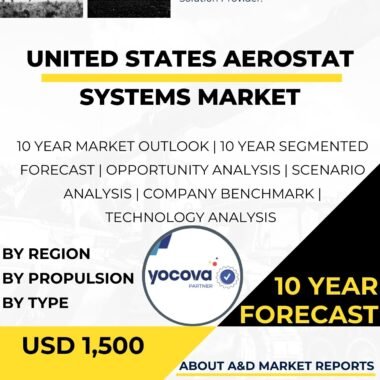Description
Malaysia Airborne ISR Market
The Malaysia Airborne Intelligence, Surveillance, and Reconnaissance (ISR) market have gained significant importance in recent years as the nation aims to enhance its defense capabilities and address evolving security challenges. Airborne ISR platforms provide critical information and situational awareness for military operations, border surveillance, disaster management, and civilian applications. Malaysia’s strategic location, security concerns, and growing need for advanced ISR capabilities have driven the adoption of airborne ISR technologies. One of the primary drivers behind the growth of the Malaysia Airborne ISR market is the increasing demand for enhanced surveillance and intelligence gathering. The nation’s geographical location, with vast coastlines and maritime boundaries, requires comprehensive surveillance to safeguard its borders and maritime interests. Airborne ISR platforms equipped with sophisticated sensors, cameras, and communication systems offer real-time data and intelligence, enhancing Malaysia’s maritime domain awareness and enabling timely responses to potential security threats.
Moreover, Malaysia’s commitment to counter-terrorism and counter-insurgency efforts necessitates advanced ISR capabilities. Airborne ISR platforms play a crucial role in detecting and tracking potential threats, such as terrorist activities, illegal border crossings, and smuggling operations. By providing actionable intelligence, these platforms enable security forces to respond proactively and effectively to emerging threats.
Additionally, the Malaysian government’s active participation in peacekeeping missions and humanitarian operations requires reliable ISR assets. Airborne ISR platforms can assist in monitoring conflict zones, supporting humanitarian relief efforts, and ensuring the safety of personnel involved in these missions.
The deployment of Airborne ISR platforms extends beyond the military domain. These platforms find applications in various civilian sectors, such as environmental monitoring, disaster management, and search and rescue operations. By providing aerial surveillance and real-time data, airborne ISR platforms contribute to effective disaster response and resource management during emergencies.
As Malaysia strives to develop indigenous defense capabilities, the Airborne ISR market offers opportunities for local research and development initiatives. Collaborations between the government and local defense companies, as well as partnerships with international ISR manufacturers, can facilitate technology transfer and expertise development, fostering the growth of Malaysia’s defense industry.
Furthermore, the Airborne ISR market offers economic benefits by creating job opportunities and attracting foreign direct investment. As the demand for ISR platforms increases, local manufacturing and maintenance facilities can be established, generating employment and enhancing Malaysia’s defense industrial base.
However, several challenges must be addressed to fully realize the potential of the Airborne ISR market in Malaysia. One significant obstacle is the high cost associated with acquiring and operating advanced ISR platforms. Ensuring cost-effectiveness and efficient resource allocation will be crucial to sustain the development and deployment of these platforms.
Moreover, maintaining an agile ISR capability requires continuous updates and improvements to keep pace with evolving threats and technological advancements. Regular modernization and upgrades are necessary to address obsolescence and maintain the platforms’ effectiveness over time.
Additionally, ensuring the interoperability of Airborne ISR platforms with other defense assets, such as ground stations, command and control centers, and data networks, is essential for seamless integration and coordinated operations.
Furthermore, investing in the training and development of skilled personnel is critical for effectively operating Airborne ISR platforms. Adequate training programs and knowledge transfer initiatives will ensure that personnel are proficient in handling these complex and sophisticated ISR systems.
In conclusion, the Airborne ISR market in Malaysia is witnessing significant growth as the nation recognizes the importance of intelligence gathering, surveillance, and reconnaissance for enhanced defense capabilities and security. The adoption of advanced ISR platforms offers critical insights and situational awareness for military and civilian operations, safeguarding national interests and contributing to regional security and stability. Efforts to develop indigenous defense capabilities through research and development initiatives and partnerships with international defense companies are crucial for sustainable growth in the market. Addressing challenges related to cost, technology advancement, interoperability, and personnel training will be essential to ensure the successful deployment and operation of Airborne ISR platforms in Malaysia’s defense and civilian sectors. By investing in advanced ISR capabilities, Malaysia can enhance its defense posture, effectively respond to security threats, and protect its national interests, contributing to regional security and peacekeeping efforts.




